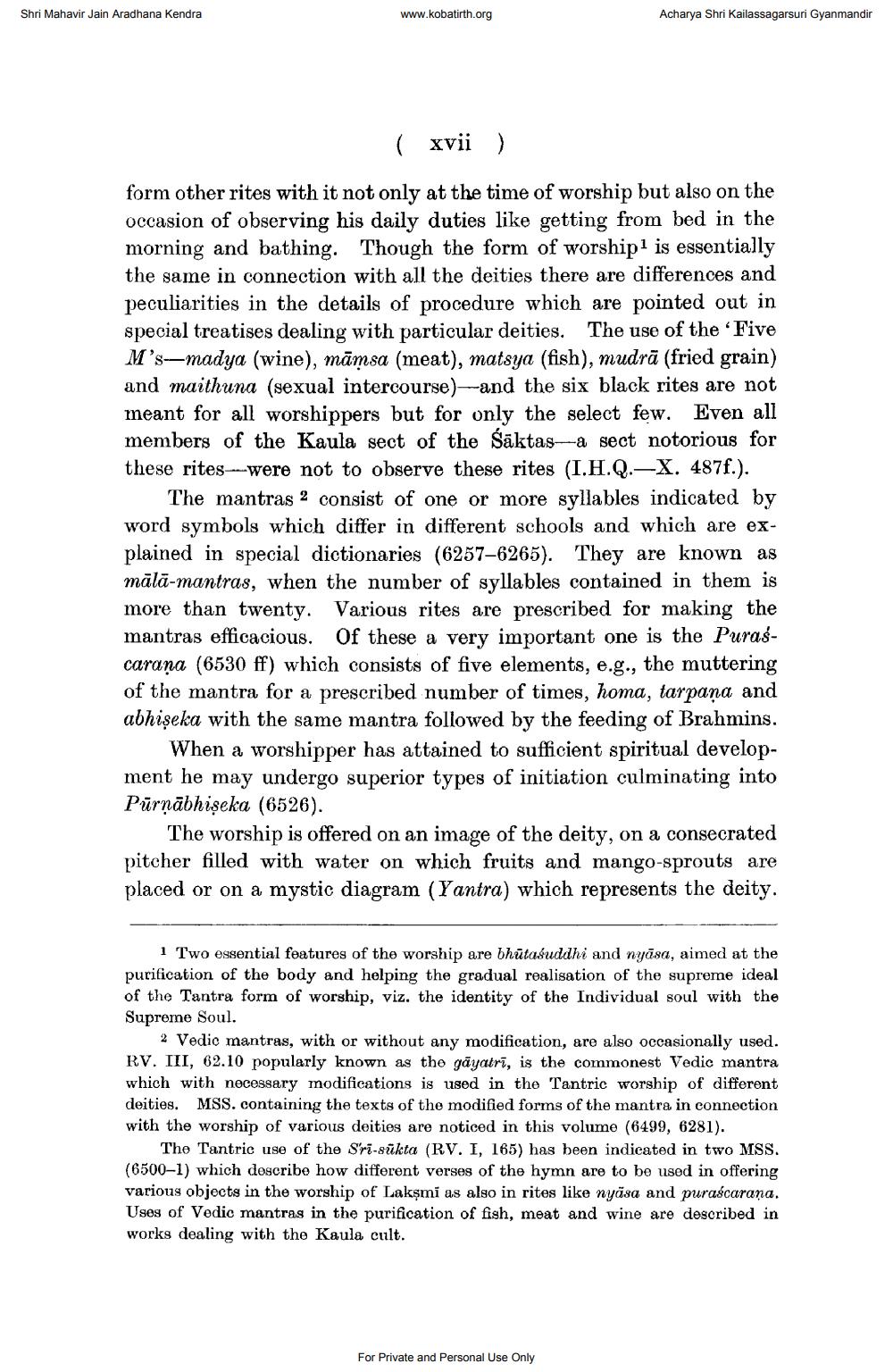________________
Shri Mahavir Jain Aradhana Kendra
www.kobatirth.org
Acharya Shri Kailassagarsuri Gyanmandir
( xvii)
form other rites with it not only at the time of worship but also on the occasion of observing his daily duties like getting from bed in the morning and bathing. Though the form of worship is essentially the same in connection with all the deities there are differences and peculiarities in the details of procedure which are pointed out in special treatises dealing with particular deities. The use of the Five M's-madya (wine), māmsa (meat), matsya (fish), mudrā (fried grain) and maithuna (sexual intercourse)--and the six black rites are not meant for all worshippers but for only the select few. Even all members of the Kaula sect of the sāktas-a sect notorious for these rites--were not to observe these rites (I.H.Q.-X. 487f.).
The mantras 2 consist of one or more syllables indicated by word symbols which differ in different schools and which are explained in special dictionaries (6257–6265). They are known as mālā-mantras, when the number of syllables contained in them is more than twenty. Various rites are prescribed for making the mantras efficacious. Of these a very important one is the Purascarana (6530 ff) which consists of five elements, e.g., the muttering of the mantra for a prescribed number of times, homa, tarpana and abhiseka with the same mantra followed by the feeding of Brahmins.
When a worshipper has attained to sufficient spiritual development he may undergo superior types of initiation culminating into Pūrņābhiseka (6526).
The worship is offered on an image of the deity, on a consecrated pitcher filled with water on which fruits and mango-sprouts are placed or on a mystic diagram (Yantra) which represents the deity.
1 Two essential features of the worship are bhūtasuddhi and nyāsa, aimed at the purification of the body and helping the gradual realisation of the supreme ideal of the Tantra form of worship, viz. the identity of the Individual soul with the Supreme Soul.
2 Vedic mantras, with or without any modification, are also occasionally used. RV. III, 62.10 popularly known as the gāyatrī, is the commonest Vedic mantra which with necessary modifications is used in the Tantric worship of different deities. MSS. containing the texts of the modified forms of the mantra in connection with the worship of various deities are noticed in this volume (6499, 6281).
The Tantric use of the Sri-sūkta (RV. I, 165) has been indicated in two MSS. (6500-1) which describe how different verses of the hymn are to be used in offering various objects in the worship of Lakşmi as also in rites like nyāsa and purascarana. Uses of Vedic mantras in the purification of fish, meat and wine are described in works dealing with the Kaula cult.
For Private and Personal Use Only




